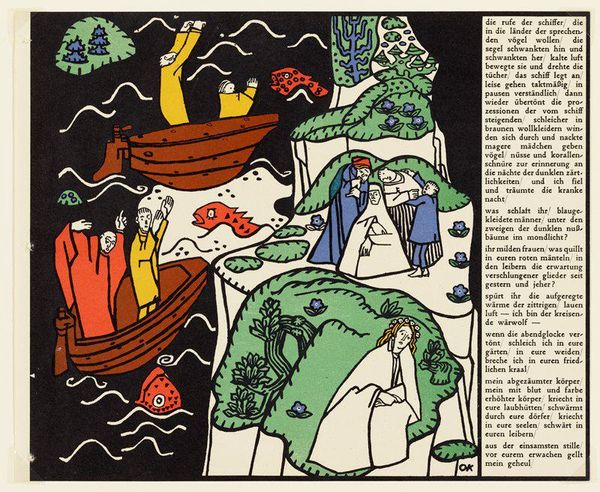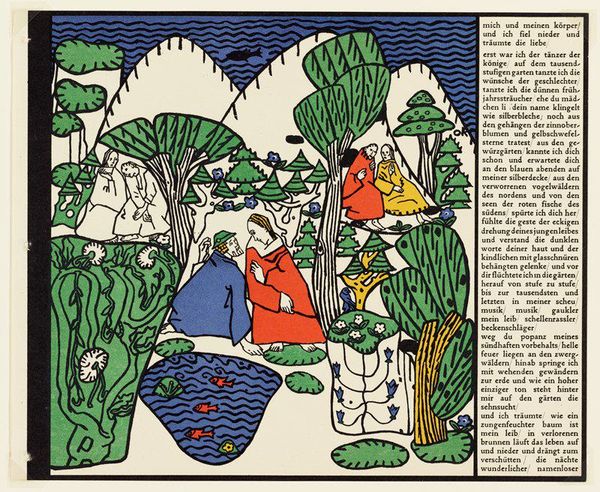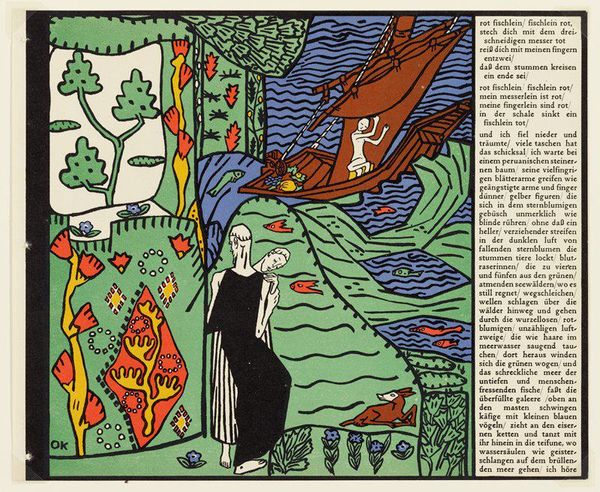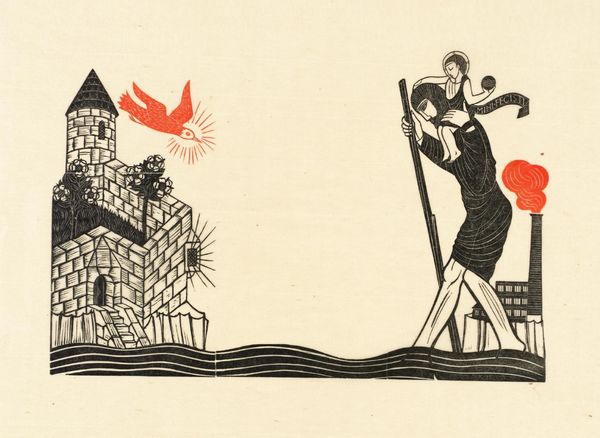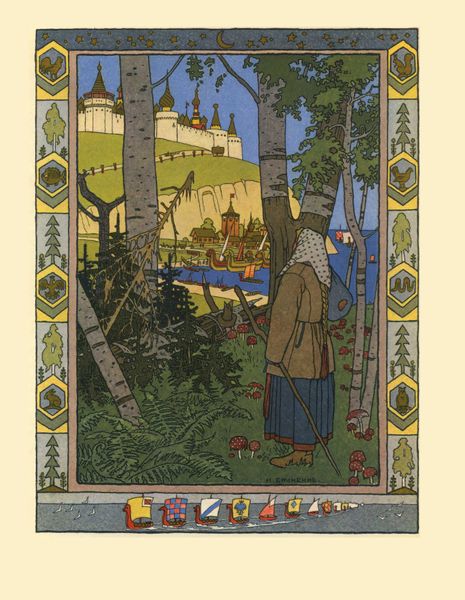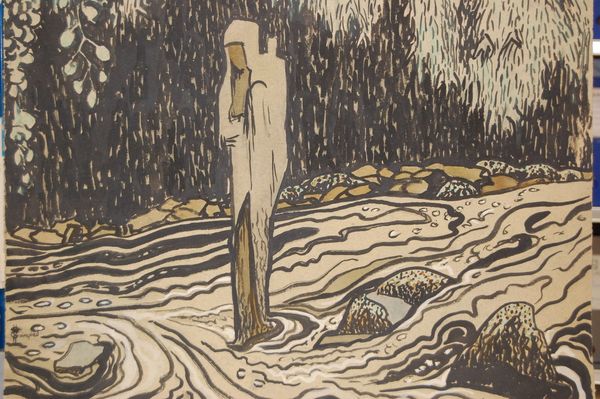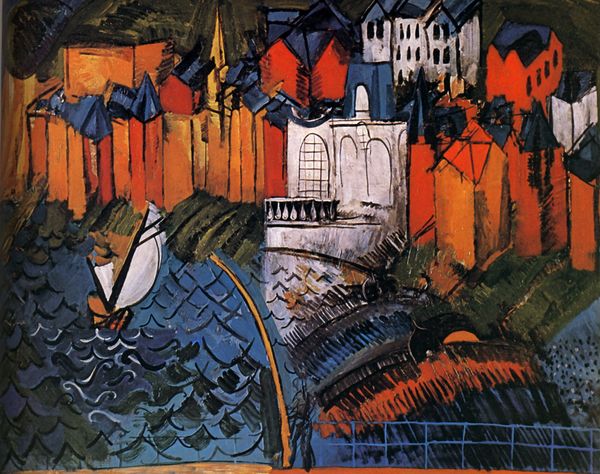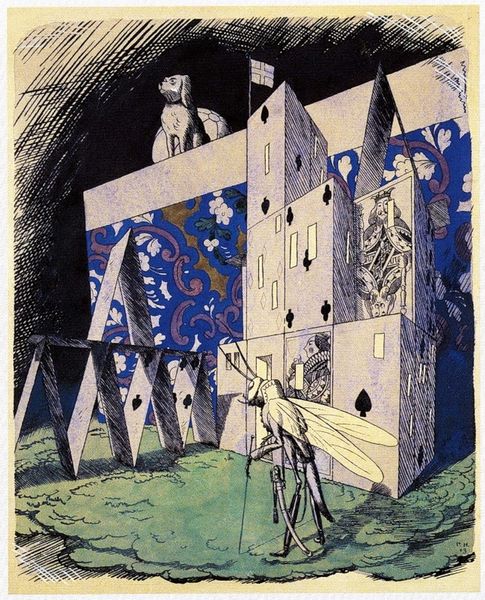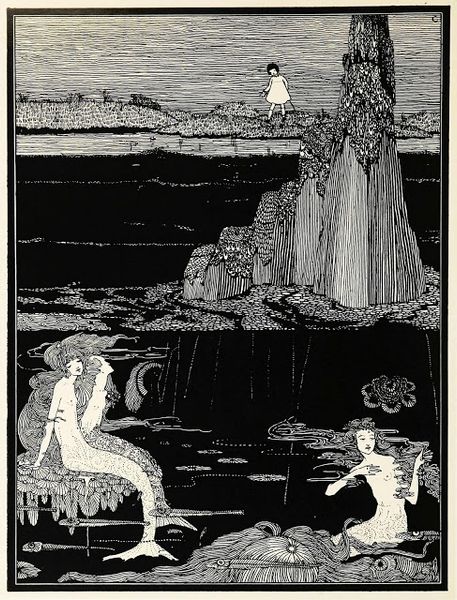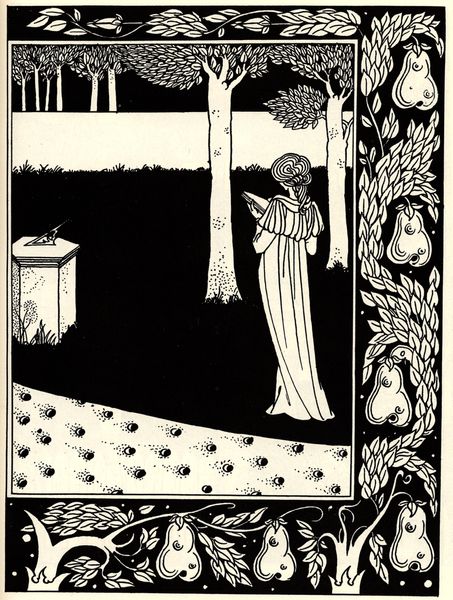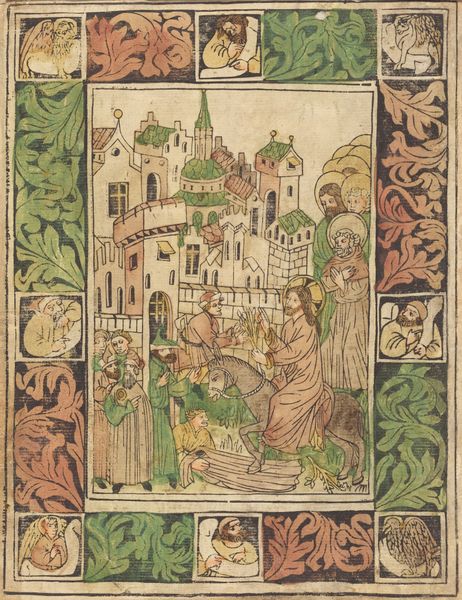
Title plate from The Dreaming Youths Possibly 1907 - 1917
0:00
0:00
graphic-art, color-lithograph, print, woodblock-print
#
graphic-art
#
cartoon like
#
comic strip
#
color-lithograph
# print
#
book
#
landscape
#
junji ito style
#
comic and comic book
#
woodblock-print
#
expressionism
#
comic book style
#
comic style
#
cartoon style
#
comic art
#
cartoon theme
#
doodle art
Dimensions: 9 1/2 x 11 1/2 in. (24.13 x 29.21 cm) (sheet)
Copyright: No Copyright - United States
Editor: So, here we have Oskar Kokoschka’s "Title plate from The Dreaming Youths," a color lithograph that might date from between 1907 and 1917. There's something striking about the use of these blocky forms and vivid colours. How do you read this image, especially thinking about its place in history? Curator: Well, if we situate this piece within the socio-political context of early 20th century Vienna, it starts to speak volumes. Kokoschka was an early Expressionist, and his work often challenged the conservative norms of the time. Notice the flattened perspective, the bold outlines. These are deliberate choices that push against traditional academic painting. Editor: So, the style itself is a form of rebellion? Curator: Exactly! Think about the burgeoning avant-garde movements: they were deeply intertwined with societal shifts, questioning authority. Kokoschka, like many of his peers, was interested in exploring the psychological and social anxieties of the era through his art. "The Dreaming Youths", positioned as a title plate, suggests the start of a narrative. What do you think he's setting the stage for? What sort of dreamscape? Editor: I'm guessing something unconventional, perhaps even unsettling. The stark contrasts definitely create a sense of unease, even in what seems like a fairytale setting. Is there something specifically Austrian about his expressionism? Curator: Absolutely. Consider the cultural landscape of Vienna at the time – Freud’s psychoanalysis was gaining traction, Schnitzler was exploring taboo subjects in his plays… Kokoschka's art taps into that same undercurrent of psychological exploration and challenges to bourgeois morality. Editor: I see that connection much clearer now – it’s more than just stylistic choices; it’s a whole cultural attitude reflected in the art. Curator: Precisely. It reflects a generation grappling with change, and actively shaping its own visual language to articulate it. Editor: Thanks, I’ve learned so much today. It definitely added to my understanding about not just his art, but also the context in which it was made!
Comments
No comments
Be the first to comment and join the conversation on the ultimate creative platform.

